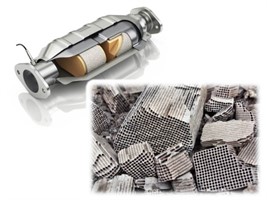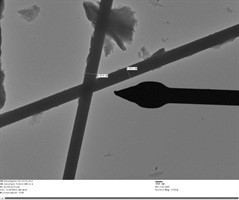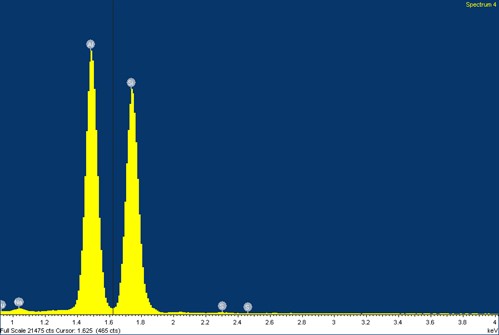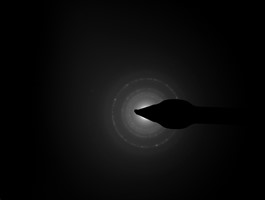Catalytic Converters
Suppliers and users of Catalytic Converters must take
necessary precautions to protect workers from Refractory Ceramic
Fibres.
HSE has extensive experience in the identification,
characterisation, measurement and risk assessment of exposure to
fibres. One potential source of hazardous fibres is the fibre mats
contained within catalytic convertors (and diesel particulate
filters). Catalytic converters are manufactured in many different
shapes and sizes, and act to reduce volatile organic compounds
(VOCs), carbon monoxide and nitrogen oxides
(NOx) emitted from vehicle exhaust gases.
 In this image of a typical catalytic
convertor, the fibre mat (white, outside) surrounds the metallic
honeycomb structure (yellow, inside), which contains precious
metals and is recyclable. These fibre mats are generally made of
one of three different fibre types: Refractory Ceramic Fibres
(RCF), Poly-Crystalline Wools (PCW) and Alkali Earth Wools
(AEW).
In this image of a typical catalytic
convertor, the fibre mat (white, outside) surrounds the metallic
honeycomb structure (yellow, inside), which contains precious
metals and is recyclable. These fibre mats are generally made of
one of three different fibre types: Refractory Ceramic Fibres
(RCF), Poly-Crystalline Wools (PCW) and Alkali Earth Wools
(AEW).
RCF is classified as a Category 1B carcinogen and end-of-life
catalytic converters should therefore be treated as hazardous
waste. RCFs are also covered by the Registration, Evaluation,
Authorisation, restriction of Chemicals regulations (REACH
2006) and Classification, Labelling and Packaging of substances
(CLP 2009). This means that suppliers and users must be aware that
products contain RCF when selling on or sending for recycling.
Appropriate packaging and labelling must also be used to protect
worker health by preventing accidental exposure to RCF during
disposal and recycling.
However, neither PCW nor AEW are classified as carcinogens and,
therefore, are not subject to the same regulations. PCW and AEW are
visually very similar in appearance to RCF and it is therefore
impossible to differentiate between them by visual inspection.
Catalytic converter manufacturers and suppliers will typically
replace their customers' existing stock with their own products.
Without testing, large numbers of converters containing RCF could
be sent for recycling (extraction of precious metals) or sold on to
third parties without the appropriate precautions being taken.
The Transmission Electron Microscopy (TEM)
techniques used by HSE can, however, differentiate between the
fibre types, identifying which products contain RCF and which
contain unregulated PCW or AEW. This protects workers by reducing
the likelihood of accidental exposure to RCF during disposal and
recycling. It also allows significant cost savings by identifying
which converters require segregation and special treatment and
which do not.
HSE is UKAS accredited
(ISO 17025) for the identification of inorganic fibres by TEM/EDX.
For further information, please contact
Sample Registration (0203 028 3383).
More information on the science
The morphology (appearance) of the three fibre types is similar,
making them difficult to differentiate. However, the techniques
used at HSE's Science and Research Centre allow this to be
done.
Energy Dispersive X-Ray Spectroscopy (EDX) is a
technique that reveals the chemical composition of fibres. The
chemical composition of AEW is sufficiently different from RCF and
PCW to allow differentiation by EDX. RCF and PCW, however, are very
similar and therefore require a further technique called
Selected Area Electron Diffraction (SAED).

TEM image of RCF fibres

EDX spectrum from RCF
fibre
The structure within PCW is largely crystalline and will
therefore produce a pattern (see below) when SAED is applied,
whereas the amorphous structure within RCF does not produce a
pattern.

SAED pattern from PCW showing
concentric ring pattern
In summary, a combination of the EDX and SAED techniques applied
using HSE's TEM instrument allows the three different fibre types
to be successfully differentiated.
Back to the top